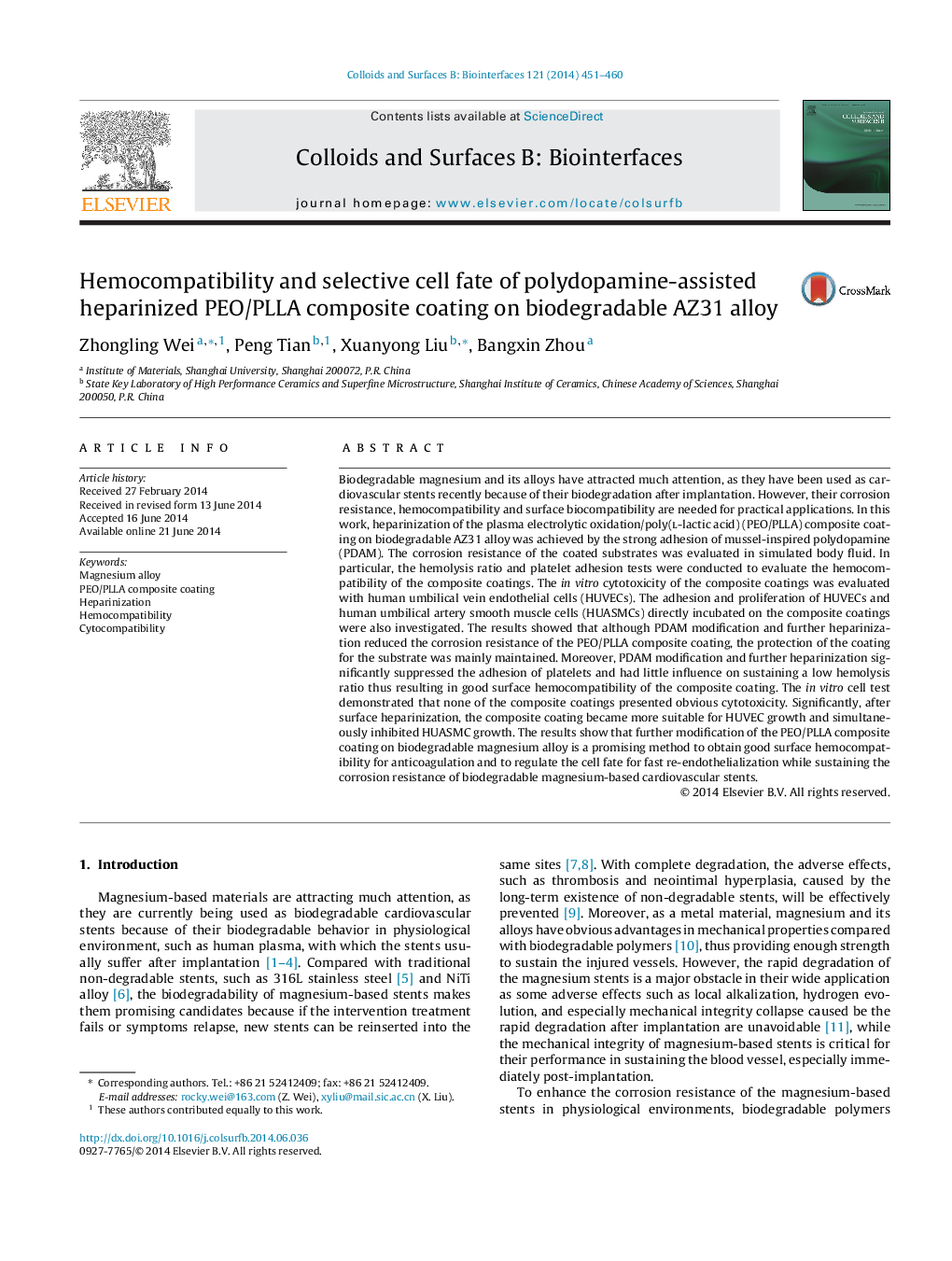| کد مقاله | کد نشریه | سال انتشار | مقاله انگلیسی | نسخه تمام متن |
|---|---|---|---|---|
| 599655 | 1454283 | 2014 | 10 صفحه PDF | دانلود رایگان |

• The heparinization of PEO/PLLA composite coating on AZ31 alloy is achieved by PDAM assistance.
• The heparinization process shows reduced corrosion resistance for the PEO/PLLA composite coating.
• The heparinization improves the hemocompatibility of the composite coating.
• The heparinization shows selective enhancement for endothelial and smooth muscle cell growth.
Biodegradable magnesium and its alloys have attracted much attention, as they have been used as cardiovascular stents recently because of their biodegradation after implantation. However, their corrosion resistance, hemocompatibility and surface biocompatibility are needed for practical applications. In this work, heparinization of the plasma electrolytic oxidation/poly(l-lactic acid) (PEO/PLLA) composite coating on biodegradable AZ31 alloy was achieved by the strong adhesion of mussel-inspired polydopamine (PDAM). The corrosion resistance of the coated substrates was evaluated in simulated body fluid. In particular, the hemolysis ratio and platelet adhesion tests were conducted to evaluate the hemocompatibility of the composite coatings. The in vitro cytotoxicity of the composite coatings was evaluated with human umbilical vein endothelial cells (HUVECs). The adhesion and proliferation of HUVECs and human umbilical artery smooth muscle cells (HUASMCs) directly incubated on the composite coatings were also investigated. The results showed that although PDAM modification and further heparinization reduced the corrosion resistance of the PEO/PLLA composite coating, the protection of the coating for the substrate was mainly maintained. Moreover, PDAM modification and further heparinization significantly suppressed the adhesion of platelets and had little influence on sustaining a low hemolysis ratio thus resulting in good surface hemocompatibility of the composite coating. The in vitro cell test demonstrated that none of the composite coatings presented obvious cytotoxicity. Significantly, after surface heparinization, the composite coating became more suitable for HUVEC growth and simultaneously inhibited HUASMC growth. The results show that further modification of the PEO/PLLA composite coating on biodegradable magnesium alloy is a promising method to obtain good surface hemocompatibility for anticoagulation and to regulate the cell fate for fast re-endothelialization while sustaining the corrosion resistance of biodegradable magnesium-based cardiovascular stents.
Figure optionsDownload as PowerPoint slide
Journal: Colloids and Surfaces B: Biointerfaces - Volume 121, 1 September 2014, Pages 451–460